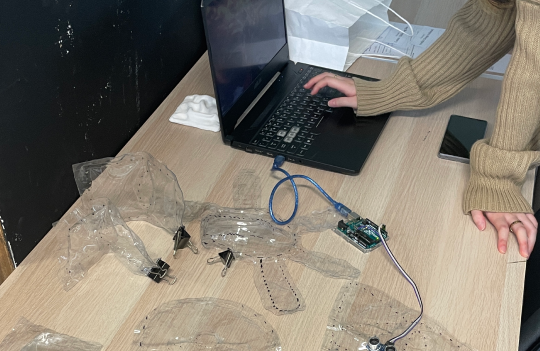Week 1 - 3
During Week 1, we have cohort briefing, and in Week 2, we have a sharing session about our prototype that we submitted in Semester 1. Week 3 onwards, we will be focusing on prototyping and consultation for our dissertations.
Sharing session
In the sharing session, I have prepared a video to present my work and current progress. The video can be found in my Semester 1, WEEK 16. I realized that the video effectively explains my project and is the best way to demonstrate my current progress.
Some interesting question based on the feedbacks:
• Can we design the virtual environment to reflect your personal style?
The prototype was built from a template. It is possible to design the virtual environment and include more narrative. I believe that the uniqueness of the space should also be dependent on the creator and how they choose to customize their world based on what they have scanned as well.
• Connect the different spaces together?
I believe that by enhancing our understanding of the user experience, we can seamlessly connect the flow of the spaces and improve the overall shopping experience."


What is the final platform selected for the metaverse prototype?
After evaluating various programs, the two with the best results were Spatial and Unity. Spatial has a public server that is easily accessible online and features a beginner-friendly interface without the need for coding skills. However, it has limited features and does not allow for editing of 3D assets or character behavior. To animate in Spatial, one must embed it into the 3D model. Unity offers a wide range of advanced tools for customization, including the ability to alter character behavior and directly edit 3D assets. It also allows for coding, which is necessary for the goal of creating in-game currency. However, the learning curve for Unity is steep and it requires significant time and effort for beginners to create a virtual world. In conclusion, Unity was chosen for this project due to its versatility and advanced capabilities, despite the steeper learning curve.
Reflection
I have always been passionate about VR games, which inspired me to learn more about the creation process behind them. I discovered that creating a virtual world involves not just graphics, but also a solid understanding of coding. Determined to develop my skills, I allocated my time effectively and learned from various online resources, including YouTube, to experiment with different technical software such as “Unity”, “Spatial”, “Qlone”, and other 3D modeling programs. I evaluated each software to determine the best fit for my final prototypes. While some software had a steep learning curve requiring coding skills, I valued the customisation options they offered. My previous experience with website coding made it easier for me to grasp the concept, although it took time to resolve key issues I encountered along the way. This project required extensive testing and experimentation to determine the best methods for creating 3D scanned objects and uploading them into the metaverse. The trial and error process allowed me to gain a deeper understanding of the software and identify what worked best for me. This helped me to ask more specific questions and find answers to achieve my goals.


What is the final platform selected for the 3D scan prototype?
After evaluating various options, the best results were obtained from “Qlone” and “AI” program. “AI” provides the most accurate results but its is not beginner-friendly, requiring specialised hardware to process. In contrast, “Qlone” is more user-friendly as it is simply an app that can be downloaded on a phone. Coupled with a straightforward process and an AR dome that guides the user, it leads to a more accurate result compared to other 3D scanning apps. The use of different scanning mats with varying ranges for scanning objects of different sizes makes it easier to capture objects of specific sizes accurately. As the goal is to scan small collectibles, “Qlone” is the best option for its accuracy, accessibility, and cost-effectiveness. It requires less post-processing time and effort, and scanning in an optimised environment can further improve your accuracy.




